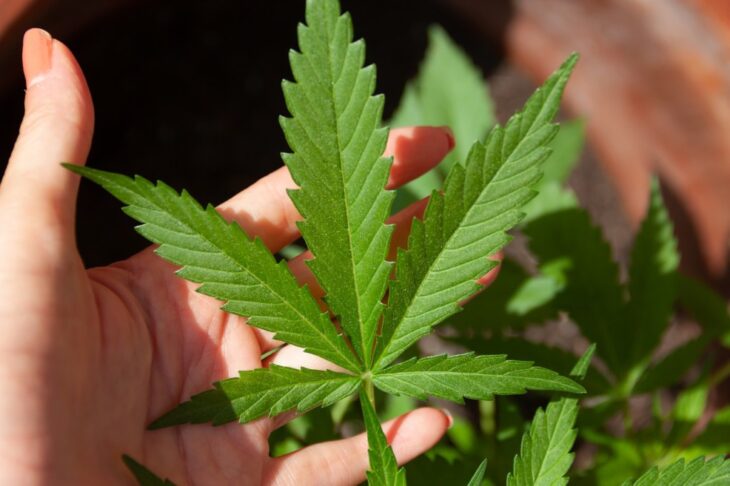The marijuana industry is rapidly evolving, with new technologies, regulations, and consumer preferences constantly emerging. Amid the growth and maturity of the industry, there are several key trends that are likely to determine the future fate of marijuana. Here we can share with you the most important trends to watch for over the next few years.
Contents
Legalization at the State and Federal Level
One of the most significant trends in the marijuana industry is the ongoing trend toward legalization. However, most still have not legalized recreational marijuana. Nevertheless, marijuana remains illegal at the federal level. This fact creates significant challenges for businesses in the industry.
Public opinion also continues to shift in favor of legalization. We hope that more states will legalize marijuana in the near future. Moreover, there is growing pressure on the government to remove marijuana from Schedule I, which will make it easier to operate and expand businesses.

Source: dictionary.com
Increasingly Sophisticated Consumer Preferences
As the marijuana industry has grown, so too have consumer preferences. Today’s marijuana consumers are becoming more sophisticated and discerning. After all, there is a reason that the market is growing for high-quality products that have been sourced from environmentally friendly sources. People are looking for those that are pesticide-free and lab-tested for potency and purity. Additionally, consumers are becoming more interested in the specific effects and terpene profiles of different strains, and are seeking out products that are tailored to their specific needs and preferences. This trend is likely to continue as the industry matures, with a growing emphasis on product quality and customization.
Innovation in Delivery and Consumption Methods
Another trend in the marijuana industry is the ongoing innovation in delivery and consumption methods. While smoking remains the most common way to use, there are a growing number of alternatives. Additionally, there are new technologies emerging, such as nanotechnology, which can make cannabis products more effective and bioavailable. Consumers are increasingly interested in health and wellness. This is probably the reason for the growing demand for products that offer quick, convenient and discreet ways to consume.

Source: leafly.com
Increasing Investment and Consolidation
As the marijuana industry continues to grow, there is increasing investment and consolidation taking place. Large corporations and established businesses are starting to pay attention to the potential profits from this. It can be made really quickly in this industry, leading to a flurry of mergers, acquisitions and partnerships. Many people don’t want to lose this opportunity. This trend is likely to continue as the industry becomes more mainstream, with larger companies looking to enter the market and smaller companies seeking to expand and consolidate their position.
Social Equity and Justice
As the marijuana industry continues to grow and mature, there is increasing focus on social equity and justice. The criminalization of marijuana has disproportionately affected communities of color in the past. This led to a growing demand for policies and programs to address these disparities. As a result, many states that have legalized marijuana have also implemented justice programs to help those affected by the war on drugs. And that was really effective. This trend is likely to continue, with a growing emphasis on social responsibility and the need to address the historical injustices of the past.

Source: themindfulword
Emerging trends in social and cultural shifts include changing perceptions of marijuana, increasing acceptance of mental health treatment, growing interest in sustainability and ethical consumption, the rise of remote work and digital nomadism, and the increasing use of technology for social and political activism.
Changing perceptions
Marijuana, also known as cannabis, has been a controversial substance for decades. Historically, it has been stigmatized as a dangerous and addictive drug with no legitimate medical use. However, in recent years, there has been a notable shift in public perception of marijuana. This shift has been driven by a combination of scientific research, changes in policy, and evolving cultural attitudes. In this article, we will explore some of the key factors contributing to changing perceptions of marijuana.

Source: americanspa.com
Medical Uses
One of the most significant factors contributing to changing perceptions of marijuana is the growing body of scientific research on its medical uses. In recent years, numerous studies have demonstrated the potential therapeutic benefits of cannabis for treating a range of health conditions, from chronic pain and inflammation to epilepsy and anxiety. As a result, an increasing number of people are beginning to view marijuana as a legitimate medicine, rather than just a recreational drug.
Legalization
Another key factor driving changing perceptions of marijuana is the legalization of marijuana for medical and/or recreational use in many states and countries around the world. As more people have legal access to marijuana, they are able to see for themselves that it is not the dangerous drug that it was once made out to be. Additionally, legalization has allowed for more research into the plant, which has further highlighted its potential benefits.

Source: workplacehcm.com
Cultural Shifts
Finally, there has been a significant cultural shift in attitudes towards marijuana. As more people have access to accurate information about the plant, and as they see the benefits that it can provide, many are beginning to view it in a more positive light. Additionally, the rise of the wellness industry has contributed to changing perceptions of marijuana. As more people seek out natural remedies for health and wellness, they are turning to cannabis as a potential solution.
Conclusion
In conclusion, the marijuana industry is rapidly evolving, with new trends, technologies, and regulations constantly emerging. As the industry continues to grow and mature, it is likely that we will see ongoing changes in the legal landscape, consumer preferences, delivery and consumption methods, investment and consolidation, and social equity and justice. Those who are interested in participating in the industry should keep a close eye on these trends (such as new products, like thc rice crispy treats) and position themselves to take advantage of the opportunities they present.
